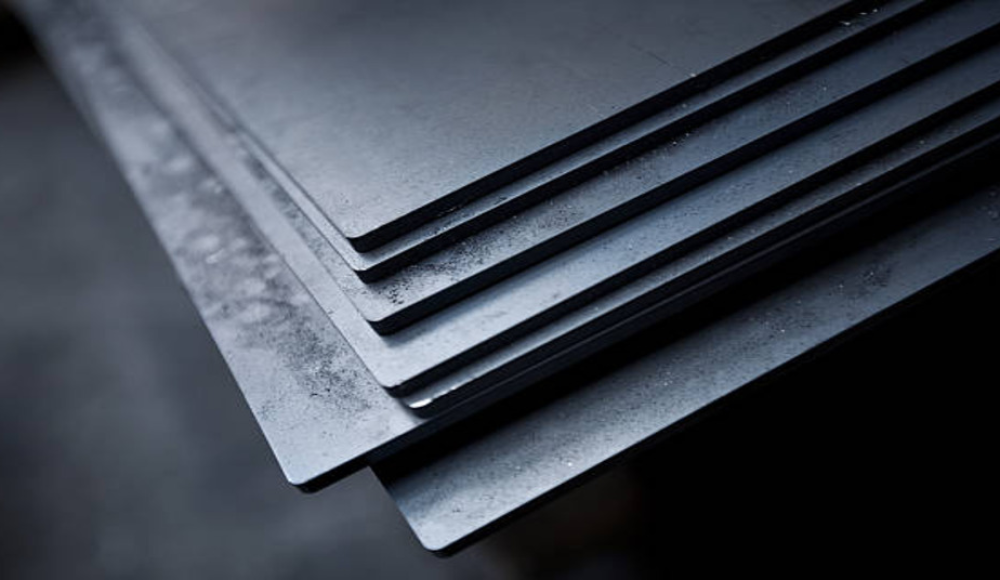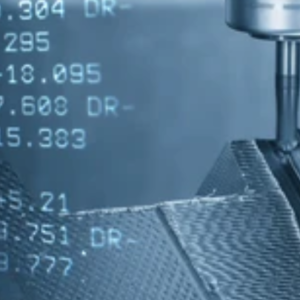En metalurgia, El titanio y el acero aportan ciertos beneficios.. Por sus asombrosas propiedades químicas y físicas., Son adecuados para varios sectores.. La discusión entre el titanio y el acero es crucial para entender. A veces puede resultar desconcertante incluso para los profesionales más experimentados decidir cuál de estos metales utilizar.. Es importante conocer por tanto las características que son propias de cada uno de ellos..
¿Qué es el titanio??
Titanio tiene una densidad baja y es muy fuerte. La resistencia a la corrosión es ideal para ayudar a la durabilidad.. Además, El titanio se valora para su uso en altas temperaturas.. Ya que implica un mayor punto de fusión. El titanio se encuentra entre los metales más nuevos en comparación con otros metales que se utilizan en el mercado actual.. Sin embargo, tiene defectos en su estructura cristalina y contiene mezclas como carbono, nitrógeno, y oxígeno. La forma químicamente más pura del reactivo., yoduro de titanio, tiene impurezas de no más de 0.1%. Además, El material tiene alta conformabilidad y trabajabilidad.. Desafortunadamente, la resistencia del titanio puro es menor. Las aleaciones de titanio se producen mediante la adición de titanio con otros metales.. Estas aleaciones, que se originó en los EE. UU.. aproximadamente 60 años atrás, Se utilizan en aplicaciones en la industria aeroespacial y médica..
¿Qué es el acero??
Acero está compuesto de hierro, carbón, y otros elementos. Proporciona buena resistencia y durabilidad en muchas aplicaciones en diversos entornos de fabricación.. El carbono presente en él aumenta su dureza y resistencia al desgaste.. Varias propiedades, como la tenacidad y la resistencia a la corrosión, se ven afectadas por los elementos de aleación.. Los aceros se pueden clasificar como al carbono., aleación, y aceros para herramientas. Comprende una superficie no porosa.. Además, el material parece bastante denso cuando se manipula. Construcción, fabricación de automóviles, y otras industrias utilizan el acero debido a su apreciable resistencia y ductilidad..
Titanio vs.. Acero: Ocho diferencias principales
En el caso de decidir entre utilizar titanio o acero, entonces la elección depende de para qué se utilizarán los dos. El acero podría ser más apropiado debido a los costos., mientras que el titanio podría ser perfecto para necesidades de alto rendimiento. A continuación se muestra una comparación de las ocho diferencias clave entre estos metales..
1. Composición elemental
El titanio es un elemento de transición que existe como metal en su forma pura., y como ti 6-4, contiene aluminio y vanadio. Por otro lado, El acero es un material que se produce mezclando hierro y carbono con otros elementos para cumplir ciertos requisitos.. Como se discutirá más adelante, Las propiedades del acero no son constantes entre diferentes aleaciones..
2. Peso
El titanio es famoso por su peso ligero y su alta relación resistencia-peso.. Esto lo convierte en una opción popular en industrias como la aeroespacial y, por lo tanto, la necesidad de comprenderlo.. Acero, sin embargo, Es más fuerte que el aluminio pero es más pesado y, por lo tanto, no es ideal para diseños que se preocupan por el peso..
3. Dureza
entre ambos, El acero es más duro que el titanio.. Por eso es más fácil mecanizar acero.. Por eso es más difícil trabajar con titanio., pero sus aleaciones pueden aumentar su dureza debido a niveles más bajos de dureza del material..
4. Elasticidad
En general, El acero tiene una mayor elasticidad que el titanio.. El hecho de que sea elástico mejora su maquinabilidad y es de suma importancia en la fabricación de los artículos.. El titanio también tiene una elasticidad relativamente baja y esto hace que sea un poco complejo trabajar con él..
5. Durabilidad
Ambos metales son fuertes, pero el titanio resiste mucho mejor la corrosión y la temperatura.. Generalmente, El acero tiene un alto rendimiento en diversas circunstancias., pero debido a la inclusión de hierro, el material no es inmune a la oxidación. Se ha descubierto que el titanio es muy adecuado para su uso en condiciones difíciles debido a su naturaleza altamente corrosiva..
6. Resistencia a la tracción
El titanio ofrece altas relaciones resistencia/peso y, tal como, es útil en aplicaciones en las que se tiene en cuenta el peso. Aún, Ocasionalmente se prefiere el acero por su resistencia general, que es más fuerte que el aluminio para aplicaciones exigentes..
7. Aplicaciones comunes
El titanio se utiliza principalmente en aplicaciones aeroespaciales., cirugía, y deportes de motor. Tienen alta resistencia a la tracción., admirable resistencia a la corrosión, y conductividad térmica razonable para adaptarse a operaciones de alto rendimiento. Acero, por otro lado, se utiliza en la construcción, fabricación, y la industria del automóvil debido a su flexibilidad y precios asequibles..
8. Precio
El titanio es más caro que el acero debido a su alto punto de fusión y a su dificultad de procesamiento.. El acero es mucho más barato debido a la disponibilidad de hierro y a técnicas de producción relativamente más simples.. Los precios del acero dependen de la aleación y algunos de los tipos más caros incluyen cromo o titanio..
Esta información es esencial para permitir seleccionar el material adecuado a utilizar al realizar un proyecto..
Cuándo usar titanio?
El titanio es uno de los materiales más adecuados para su uso en casos donde la relación resistencia-peso, corrosión, y la biocompatibilidad son primordiales. Por su alta relación resistencia-peso, Se utiliza ampliamente en la industria aeroespacial donde el peso es un factor crítico y el rendimiento no puede verse comprometido.. También, El titanio es totalmente compatible con los tejidos corporales y, por lo tanto, se utiliza en equipos médicos como implantes y equipos quirúrgicos.. El titanio también funciona bien en aplicaciones donde el equipo asociado está expuesto a temperaturas fluctuantes o condiciones severas para preservar su estabilidad..
Cuándo emplear acero?
La elección recae en el acero en caso de que el presupuesto sea una prioridad. Porque al compararlo con el titanio, el acero es relativamente más barato. Los costos de procesamiento también son menores ya que el acero es más fácil de mecanizar., y el material está disponible en una amplia gama de aleaciones para adaptarse a requisitos particulares. El coste del material del acero es relativamente bajo, por lo que se puede utilizar preferentemente en las industrias de la construcción., industrias del automóvil, y industrias de fabricación de maquinaria debido a su durabilidad y resistencia.. Aunque el acero presenta buenas propiedades mecánicas, No se puede utilizar en aplicaciones médicas o aeroespaciales porque no es biocompatible y es más pesado que las aleaciones de aluminio utilizadas en la construcción de aviones..
Titanio vs.. Acero: Aplicaciones
El titanio también se puede describir como un material que tiene alta resistencia., buena relación secciones-peso así como excelente resistencia a la corrosión. Sin embargo, Es más difícil trabajar con titanio en comparación con el acero y esto se debe a que el material es difícil de cortar..
Dónde puedes usar titanio?
- Aeroespacial: El titanio se utiliza más comúnmente en aviones., helicópteros, y misiles, por tanto, en ménsulas, marcos y otras estructuras similares.
- Automotor: Existen muchas aplicaciones del titanio en los automóviles hoy en día, las más comunes son los sistemas de escape., parachoques, y rotores de freno, por mencionar sólo algunos.
- Médico: El titanio es el material perfecto para su uso en implantes, incluidos reemplazos de cadera y rodilla, o en la carcasa de marcapasos, ya que no es tóxico y no tiene efectos nocivos para el cuerpo humano..
- Industrial: Debido a su fuerte resistencia a la corrosión se utiliza en equipos industriales como intercambiadores de calor., procesamiento químico, y válvulas.
Donde puedes acero?
Acero, por otro lado, es bastante inmune al óxido, tener puesto, y corrosión y por esta razón, Se utiliza en todas las áreas de fabricación..
- Batería de cocina: Por eso se utiliza el acero en la fabricación de recipientes para cocinar., cuchillería, y otros utensilios necesarios para la cocina por su resistencia.
- Productos químicos industriales: Debido a su naturaleza, El acero se utiliza mejor en tuberías., fabricación de automóviles, y en la producción de instrumentos médicos..
- Construcción: El exterior de edificios y estructuras artísticas está fabricado en acero ya que es resistente y tiene un buen atractivo visual..
- Automotor: dentro de un auto, En el escape se utilizan piezas de acero., radiadores, y otras aplicaciones porque el material es dúctil y no se corroe fácilmente.
¿Qué metal es el adecuado para su proyecto??
Sin embargo, El titanio se usa indistintamente con el acero según el proyecto en cuestión.. Es crucial considerar ciertos factores antes de emplear los dos.. Estos incluyen la resistencia de los materiales., la capacidad de procesar, y su compatibilidad con el medio ambiente.
El titanio es perfecto para personas que buscan un material ligero pero que tenga una resistencia equivalente a la del acero y no se oxide.. Por tales razones, es ideal, especialmente para fines aeroespaciales y médicos donde la resistencia de la superficie es la preocupación más crítica.
Mientras que el titanio es relativamente caro, el acero es relativamente barato. Además, Es más fácil trabajar con él o darle forma que el titanio y también es más fácil de cortar.. También, El acero tiene aquellas aleaciones que se producen dependiendo de las características requeridas., Por ejemplo, anticorrosivo o de mayor resistencia a la tracción.
Al final, La elección entre acero y titanio dependerá del proyecto que se tenga en mente..
Tapas de contacto para mecanizado de precisión de titanio y acero
Para requisitos de mecanizado precisos con acero o titanio, Tapas de precisión es tu socio adecuado. Nos especializamos en la fabricación de componentes complejos y de precisión empleando métodos de mecanizado CNC de última generación en acero y titanio..
Nuestro personal profesional garantiza la producción de piezas de alta calidad para diversas industrias, incluida la aeroespacial., automotor, médico, e industriales. A través de las tapas la mejor precisión, Obtendrás alta precisión, tolerancias bajas, y acabados superficiales óptimos.
Llámanos hoy para saber cómo puede beneficiarse de nuestros servicios para su próximo trabajo de mecanizado de piezas de acero o titanio!



